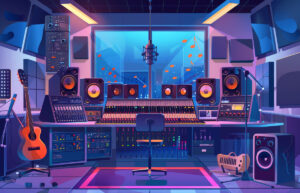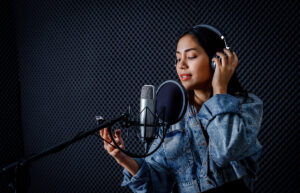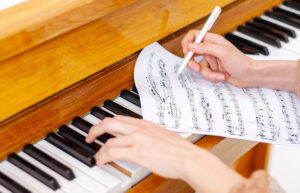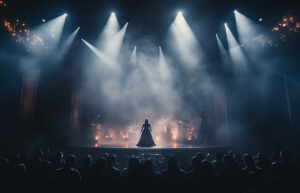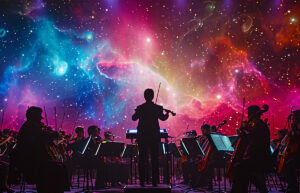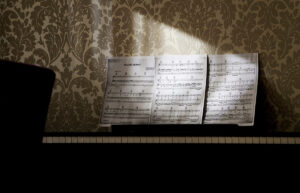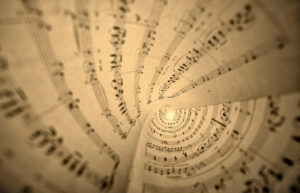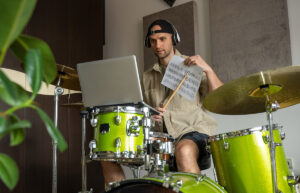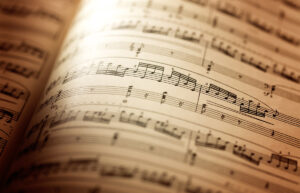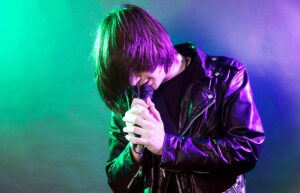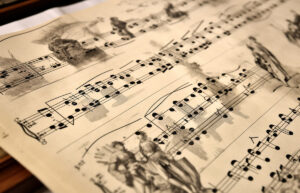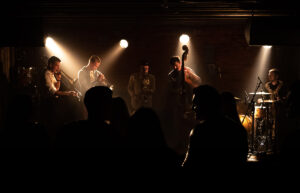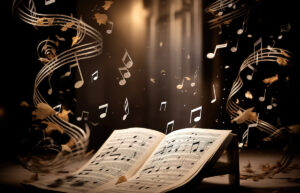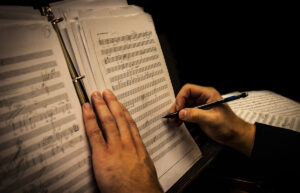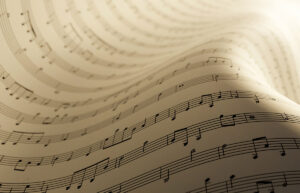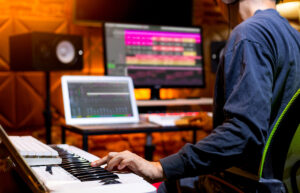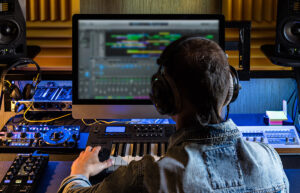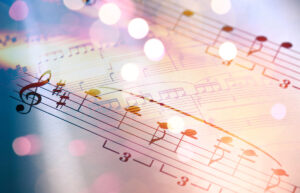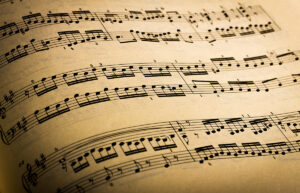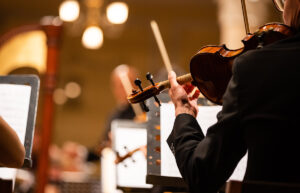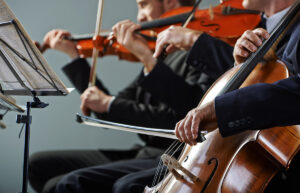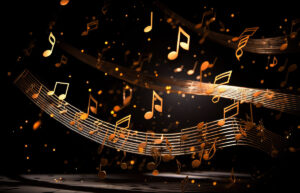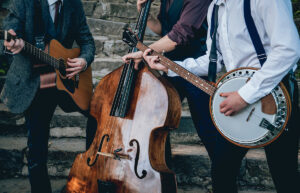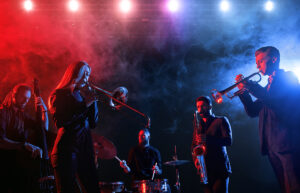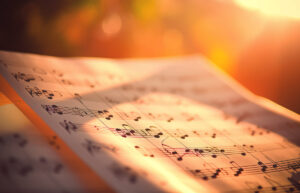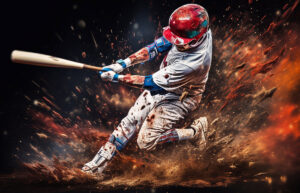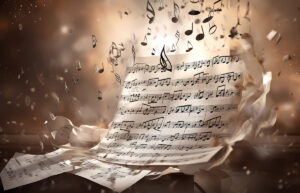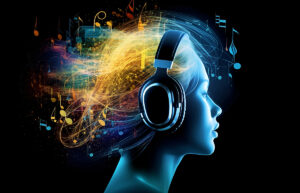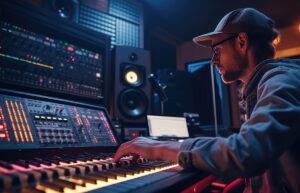What is Trap Music? Meaning, Types, Songs, Artists & More

In the dynamic realm of contemporary music, few genres have made as profound an impact as trap music has. This guide goes beyond the basics of trap music by defining trap characteristics, explaining the intricacies of crafting your own trap masterpiece, exploring the top trap hits that have dominated music charts, and highlighting the masterminds behind them – trap artists who’ve carved their names into the genre’s history. Join us as we unravel the evolution of trap music, from its roots to the grand stages of the most renowned festivals that echo with pulsating beats.
What is trap music?
Trap music is a genre that originated in the Southern United States, primarily in Atlanta, in the late 1990s. Trap beats are aggressive with heavy bass and typically feature rapid hi-hats and synthesizers. Artists such as OutKast and Underground Kingz (UGK) pioneered trap music.
At its core, trap music is more than just beats and lyrics. A “trap” refers to infamous places dealing in drugs, and trap songs often reflect themes of street life, hustling, and overcoming adversity. Trap house music has evolved over the years to become a prominent subgenre of hip-hop, influencing a wide range of artists and styles in the music industry.
Welcome to TheDemoStop, now join the community!
Connect with artists, fans and producers around the world.
Historical context of trap music (evolution)
Electronic dance music trap
In the early 2010s, trap music gained mainstream popularity, partly due to the influence of producers such as Lex Luger. A subgenre known as electronic dance music (EDM) trap incorporated EDM elements, featuring high-energy drops and synthesizers into trap. This fusion widened the genre’s appeal and propelled trap music into the global dance music scene.
Latin trap
Latin trap emerged as a significant subgenre, blending trap beats with Latin music influences. Artists such as Bad Bunny and Ozuna became popular, infusing trap with reggaeton, salsa, and other Latin rhythms. Latin trap succeeded in Spanish-speaking regions and gained international recognition, contributing to the genre’s global expansion.
Trap goes pop
With trap songs beginning to dominate music charts, pop artists began incorporating trap elements into their songs, culminating in a subgenre often called “trap pop.” With artists such as Rihanna, Beyoncé, and Ariana Grande including elements of trap beats into their hits, this crossover expanded the popularity of trap’s distinct sound to broader audiences.
Trap in k-pop
K-pop, known for its versatility and willingness to experiment with different genres, embraced trap elements. Numerous K-pop groups and artists integrated trap beats into their music, creating a wildly popular fusion showcasing the genre’s adaptability and resonance with diverse musical cultures.
Types of trap music
Atlanta trap
- Origin: Developed in Atlanta, Georgia, during the 1990s.
- Characteristics
- Heavy bass and aggressive beats.
- Gritty lyrics depicting urban life.
- Distinctive hi-hats and 808 drum patterns.
- Pioneering artists: OutKast, T.I., Gucci Mane.
Tropical trap
- Origin: Influenced by the Caribbean, tropical trap incorporating Calypso beats and synth pop music elements gained global popularity.
- Characteristics:
- Danceable rhythms with a summery vibe.
- Fusion of trap with reggae, dancehall, and tropical house.
- Global appeal: The appeal of tropical trap often extends beyond traditional hip-hop audiences.
SoundCloud trap
- Origin: This subgenre was developed on the SoundCloud platform in the late 2000s and early 2010s.
- Characteristics:
- Do-it-yourself (DIY) ethos and experimental production.
- Unconventional sounds and sampling.
- Lo-fi aesthetics and unique production techniques.
- Platform influence: SoundCloud became a crucial space for independent artists to showcase their work.
Trap soul
- Origin: Popularized in the 2010s, this subgenre blended trap with contemporary R&B elements.
- Characteristics:
- Soulful vocals over trap-influenced production.
- Exploration of themes such as love, relationships, and personal struggles.
- Introspective and emotionally resonant lyrics.
- Key artist: Bryson Tiller played a significant role in the rise of trap soul.
Characteristics of trap music
Tempo
Trap music typically features a moderate to slow tempo ranging from 70 to 110 beats per minute (BPM). This slower pace contributes to the genre’s distinct and deliberate feel.
Beat
A hallmark of trap is its emphasis on heavy bass. The basslines, often produced with deep 808 kick drums, create a powerful and resonant foundation for the music.
Fast and complex hi-hat patterns are a defining characteristic, providing energy and a sense of urgency. Snare rolls, often with quick bursts, contribute to the dynamic and intense nature of the beats.
Triplet flow
The use of triplets in vocal delivery and lyrical elements is common in a trap song. This triplet flow, characterized by three equally spaced notes or beats, adds an exceptional rhythmic pattern to the lyrics and instrumental elements.
Rolls and risers with transitions
Trap music often incorporates rolls and risers in its production. These instrumental elements gradually become intense, creating anticipation before a drop. Drops are points in the music where the energy peaks, often marked by a sudden change or addition of elements.
Smooth transitions between different song sections are crucial in a trap. Trap producers use various effects, such as sweeps, stutters, and pitch shifts, to create seamless transitions between verses, choruses, and drops.
Welcome to TheDemoStop, now join the community!
Connect with artists, fans and producers around the world.
Key elements of trap music
- Heavy 808 drum patterns
Trap music relies heavily on the 808 drum machine (rhythm composer), generating deep and resonant bass patterns echoing the genre. These drum patterns, characterized by powerful kicks and booming bass, form the heartbeat of trap beats. The 808’s distinctive sound has become synonymous with the genre, providing an impactful foundation that underlines trap music’s intensity and rhythmic drive.
- Dark and aggressive synthesizers
At the core of trap’s sonic identity are dark and aggressive synthesizers creating an intense and edgy atmosphere. Often filled with distortion and modulation, these synthesizers contribute to the genre’s specific sound. With tones that veer toward the ominous and fierce end of the spectrum, these synths add a layer of sonic depth that complements heavy beats and sets trap music apart from the mainstream hip-hop landscape.
Rap or trap vocalsVocal delivery in trap music is unique. Artists employ rap or trap vocals characterized by a distinct rhythm and style. The rhythmic flow of verses, catchy hooks, and improvised segments become storytelling tools that carry the energy of the track. Combining vocals with instrumental parts makes the genre more lively and exciting.
- Fast-paced hi-hat patternsA defining feature of trap music is its fast-paced and complex hi-hat patterns, often referred to as “trap hats.” These hi-hats set the genre’s tempo and complex rhythms. Skillfully and quickly executed, they add a layer of urgency and energy to the beats, making a unique sound signature.
- Heavy basslines
Beyond the iconic 808, additional heavy basslines are mixed to the soundtrack to amplify its impact. In addition to the basic beats, these basslines give the tracks their power. The rhythm is set by how well the bass and drums work together. These basslines contribute to the genre’s reputation for delivering powerful, bass-heavy soundscapes.
- Sparse, melodic sampled hooks
Sampled hooks that are simple but powerful bring trap music’s melodic side to the fore. These rhythmic elements, which are borrowed from different types of music, balance out the intensity of the beats. The sparse use of melodies, which are often catchy and easy to remember, makes the composition better by creating a contrast that draws the listener in.
- Moody atmospheres
Creating moody and atmospheric soundscapes is a hallmark of trap music. The sound textures in this genre make you feel vibrant. Atmospheric elements such as reverb, ambient sounds, and unique soundscapes contribute to trap tracks’ immersive and evocative quality. This dramatic aspect improves the listening experience by providing more variety to the music.
- Lyrical choruses about street life, brutality, and drugs
Trap music differs from other types of music because its lyrics often tell gritty, true stories about drugs, crime, and life on the streets. Artists use lyrics to make vivid pictures of city life and talk about their lives’ problems, battles, and harsh realities. The lyrical themes give the genre authenticity and allow artists to tell stories of how they see life in their communities.
Influence of trap music on pop culture
Trap music has left a memorable mark on pop culture, transcending its origins in the Southern United States to become a global phenomenon. The influence of trap music is evident in various facets of contemporary culture. Musically, the trap’s heavy basslines, distinctive hi-hats, and bold beats have made their way into hip-hop, pop, and electronic music.
The genre’s rise on music charts and collaborations between trap artists and pop icons have blurred genre boundaries, creating music that resonates with global audiences. Beyond music, trap culture has spread into fashion, with trap music artists often becoming style influencers. The aesthetic of trap, characterized by a mix of streetwear and high fashion, has become a growing trend.
Moreover, trap’s impact extends to dance, with its catchy beats inspiring new dance styles and routines. Trap music’s themes, inspired by urban stories, have influenced visual arts and storytelling in popular media. Trap music has become a cultural force in the contemporary pop world, shaping the music industry, fashion, dance, and stories.
Subgenres of trap music
Crunk trap
Combining elements of crunk and trap music, the crunk subgenre features energetic beats, heavy bass, and bold lyrics. It takes the high energy and party vibes from crunk music, infusing them with the signature trap sound.
Moombahton trap
A fusion of trap and moombahton, this subgenre combines the slower tempo and reggaeton-influenced rhythms of moombahton with the trap’s characteristic beats. It results in a fun, rhythmic, and tropical sound.
Deathcore trap
A crossover between trap and deathcore, this subgenre combines the aggressive and heavy elements of deathcore with trap’s rhythmic patterns. It’s a fusion of two highly different genres. Deathcore trap is a hybrid of metal and hip-hop with distorted guitars, growling vocals, and heavy beats.
Trance trap
Merging trap with elements of trance music, this trance subgenre combines trap beats with trance’s euphoric and lyrical aspects. It results in a unique blend of heavy bass and upbeat, atmospheric sounds.
Drumstep trap
Bringing together the fast-paced beats of drumstep with trap music, this subgenre features a combination of fast drum beats and trap-style hi-hats and snares. Drumstrap trap creates a high-energy and spirited sound that blends elements from both genres.
Electropop trap
Fusing trap with elements of electropop, this subgenre mixes catchy tunes, pop lyrics, and electronic music with trap music. This sound is more famous and easy to understand, making it popular among wider audiences.
How to write a trap song?
The following is a step-by-step guide to compose a trap song:
- Lay down your tempo: Choose a moderate to slow tempo, typically between 70 to 110 BPM, to establish the characteristic trap feel.
- Set your beat: Craft a tight, punchy drumbeat, focusing on the kick, snare, and hi-hats. Experiment with patterns to find a rhythm that suits your style.
- Create and then repeat your melody: Develop a catchy and memorable melody using synthesizers or other instruments. Repetition is necessary in a trap, so consider creating a looped verse to anchor your song.
- Add drums: Enhance your beat by mixing 808 drum patterns. The bassline should be deep and resonate, providing a solid foundation for the track.
- Adjust your snare: Fine-tune the snare to achieve the desired effect. Trap often features rapid and intricate snare rolls, so experiment with different patterns to add energy and dynamics.
- Use distortion: Introduce distortion to certain elements, especially 808 basses, to create a gritty and edgy texture. This adds a raw and powerful quality to the overall sound.
Steps to make trap music
Step 1: Tight drums
- Begin by establishing a solid foundation with tight and punchy drums.
- Focus on crisp hi-hats, snappy snares, and a rhythmic kick drum.
Step 2: Banging 808 (the key to trap music)
- Craft a powerful and booming 808 bassline, a cornerstone of trap music.
- Experiment with slides, pitch changes, and variations for depth and movement.
Step 3: Hype melodies and synths
- Use synthesizers to create catchy and energetic tunes.
- Layer different synths to add complexity and texture to the melodic elements.
Step 4: Sprinkle the FX in trap music
- Enhance the overall atmosphere with well-placed sound effects.
- Use risers, sweeps, and other transitional effects to create smooth transitions.
Step 5: Creating energy in trap music
- Build power throughout the track by introducing and removing elements strategically.
- Utilize volume automation, filtering, and other techniques to shape the energy flow.
Step 6: Trap music magic moments
- Synthesize standout moments that make the music track memorable.
- Introduce unexpected elements, drops, or unique sound design for impact.
Step 7: Final polishes
- Fine-tune the mix and arrangement in the final polishing stage.
- Pay attention to balance, equalizer, and compression for clarity and cohesion.
- Add final touches such as reverb and delay for spatial depth.
Welcome to TheDemoStop, now join the community!
Connect with artists, fans and producers around the world.
Trap music festivals
Rolling Loud
- Start year: Founded in 2015 in Miami, Rolling Loud quickly became one of the largest and most influential hip-hop festivals globally.
- Location: Originally based in Miami, Rolling Loud has expanded to multiple locations globally, including Los Angeles and New York.
- Activities: Beyond music, Rolling Loud engages in diverse activities such as art installations, fashion exhibits, and a focus on the overall festival experience.
- Genres: Primarily focused on hip-hop, Rolling Loud covers a broad spectrum of subgenres, including trap, rap, and other related styles.
Beat Patrol Festival
- Start year: Dating back to the early 2000s, Beat Patrol Festival has become one of Austria’s prominent recurring electronic music festivals.
- Location: It is traditionally held at the VAZ St. Pölten, an event venue in St. Pölten, Lower Austria.
- Activities: Beat Patrol Festival is a dynamic electronic music event known for its high-energy performances, impressive light shows, and immersive experiences. The festival typically spans multiple stages, offering various electronic music genres.
- Genres: While EDM is at the festival’s core, Beat Patrol caters to a wide audience by featuring various subgenres, including trap, techno, house, and more.
Trap Circus
- Start year: Trap Circus debuted in Miami in 2016, offering a distinctive approach to the traditional music festival.
- Location: Originating in Miami, Trap Circus has expanded to other cities, combining a carnival atmosphere with music.
- Activities: Besides live performances, Trap Circus features carnival rides, games, and various interactive experiences, creating a unique blend of entertainment.
- Genres: Primarily focused on trap and hip-hop, Trap Circus incorporates other urban music genres to create a diverse musical experience.
Astroworld Festival
- Start year: The inaugural Astroworld Festival took place in 2018, becoming an annual event.
- Location: Hosted in Houston, Texas, Astroworld Festival is named after Travis Scott’s album “Astroworld” and pays homage to the former amusement park.
- Activities: Beyond music, the festival incorporates immersive art installations and carnival elements, capturing the theme of Travis Scott’s album.
- Genres: While rooted in hip-hop and trap, Astroworld Festival’s diverse lineup spans multiple music genres.
Tomorrowland
- Start year: Launched in 2005, Tomorrowland has grown into a cultural phenomenon, drawing attendees from across the globe.
- Location: Based in Boom, Belgium, Tomorrowland is one of the largest and most renowned EDM festivals globally.
- Activities: Known for its elaborate stage designs, Tomorrowland is a multi-sensory experience beyond music, featuring art installations and immersive environments.
- Genres: While primarily an EDM festival, Tomorrowland often includes trap and hip-hop artists in its lineup, showcasing various electronic genres.
Electric Daisy Carnival
- Start year: Electric Daisy Carnival (EDC) was inaugurated in 1997.
- Location: EDC has been held in various locations globally, including Las Vegas.
- Activities: One of the largest EDM festivals with elaborate stage setups, carnival rides, and interactive art installations.
- Genres: Encompasses various electronic genres, including trap and bass music.
Top trap music songs
Trap Queen by Fetty Wap
- Breakout hit: “Trap Queen” by Fetty Wap became a breakout hit and propelled the artist to stardom.
- Catchy melody: The song is known for its memorable music and Fetty Wap’s unique vocal style.
- Music theme: The lyrics blend themes of love and hustle, embodying the trap music ethos.
XO Tour Llif3 by Lil Uzi Vert
- Emotional depth: In “XO Tour Llif3,” Lil Uzi Vert explores emotional themes, adding depth to the trap genre.
- Catchy hook: The song’s catchy hook and Uzi’s emotive delivery contributed to its widespread appeal.
- Cultural impact: “XO Tour Llif3” impacted pop culture and resonated with the mass audience.
Mask Off by Future
- Flute loop: The distinctive flute loop in “Mask Off” became iconic and set the song apart from other songs in the genre.
- Anthem of resilience: Future’s lyrics and the flute melody create an melodic anthem of strength and overcoming challenges.
- Viral challenge: The piece inspired a viral challenge, further cementing its cultural impact.
No Lie by 2 Chainz
- Collaborative effort: “No Lie” features Drake, and their collaboration resulted in a chart-topping success.
- Swagger and confidence: The track exudes swagger and confidence, characteristic of 2 Chainz and Drake.
- Production brilliance: The production and the artists’ chemistry made it a standout trap hit.
Humble by Kendrick Lamar
- Thoughtful lyrics: Kendrick Lamar’s “Humble” combines trap beats with thought-provoking lyrics.
- Social commentary: The song reflects humility, success, and societal expectations.
- Critical acclaim: “Humble” received critical acclaim for its artistic and cultural impact.
Life Is Good by Future ft. Drake
- Dynamic duo: Future and Drake join forces, creating an iconic collaboration.
- Genre fusion: The song seamlessly fuses trap and rap elements, showcasing the versatility of both artists.
- Commercial success: “Life Is Good” achieved massive commercial success, dominating charts worldwide.
Welcome to TheDemoStop, now join the community!
Connect with artists, fans and producers around the world.
Top trap music artists
Travis Scott

- Genre innovation: Travis Scott is known for pushing the boundaries of trap with his innovative production and unique sound.
- Astroworld: His album “Astroworld” received widespread acclaim for its creativity and contribution to the trap genre.
- Live performances: Travis Scott’s energetic and immersive live performances have solidified his status as a top trap artist.
2 Chainz

- Versatility: 2 Chainz showcases versatility in his trap music, seamlessly moving between energetic anthems and introspective tracks.
- Catchy hooks: Known for his catchy hooks and charismatic delivery, 2 Chainz has consistently produced chart-topping hits.
- Collaborations: His collaborations with other top artists have further expanded his influence in the trap and hip-hop scenes.
Migos

- Signature style: Migos is celebrated for popularizing the triplet flow and their signature ad-libs, influencing the trap subgenre.
- Notable album: The album “Culture” marked a significant moment for Migos, earning critical acclaim and commercial success.
- Group dynamics: The trio’s dynamic and complementary styles have brought them collective success in the trap music industry.
Future

- Creative music: Future’s innovative work and consistent chart presence have made him a defining figure in trap music.
- Emotional depth: His ability to infuse trap with emotional depth, addressing themes of struggle and success, sets him apart.
- Hits and collaborations: Future’s numerous hits and collaborations with other top artists have solidified his position as a key influencer in the trap genre.
Conclusion
What is a trap? “Trap” can be traced to “trap houses,” where illicit activities unfold. In this context, “trap” denotes not only a genre of music but a cultural expression deeply connected to the experiences and narratives of the streets.
Trap music: Trap music is a kind of hip-hop developed in the Southern United States. The genre captures street life’s raw energy and realities, blending strong beats, angry lyrics, and emphasis on urban themes and street culture.
Historical context of trap music: Trap music originated in Atlanta, Georgia, in the late 1990s. It emerged from the local hip-hop scene and showed the rough truths of modern society, particularly in neighborhoods associated with the drug trade and street culture.
Types of trap music: Various types have emerged, showcasing the genre’s adaptability. Some notable subgenres include EDM Trap, Latin Trap, SoundCloud Trap, and Trap Soul, each incorporating unique elements into the trap framework.
Characteristics of trap music: The beat of trap music is moderate to slow, and it has heavy bass, sharp hi-hats, 808 drum patterns, and rough words that often talk about the ups and downs of street life.
Key elements of trap music: The features focus on 808 drum patterns, triplet flows in vocals, distinctive snare rolls, and atmospheric synths. These elements contribute to the genre’s signature sound.
Influence of trap music on pop culture: Trap music has significantly influenced pop culture, transcending its hip-hop roots to impact fashion, dance, and broader cultural trends. Its global appeal has blurred genre boundaries, influencing pop and electronic music.
Subgenres of trap music: Subgenres include EDM Trap, Latin Trap, SoundCloud Trap, Trap Soul, and more, showcasing the trap’s versatility and adaptability across different musical landscapes.
How to write a trap song? To write a trap song, establish a moderate to slow tempo, craft a tight drum beat with 808 patterns, create a catchy melody, and incorporate elements like snare rolls and atmospheric synths. Distortion can be used for added texture.
Steps to make trap music:
- Setting the tempo
- Creating a strong beat with 808 patterns
- Developing catchy melodies
- Adding drums
- Adjusting the snare
- Using distortion for a gritty edge
Smooth transitions and impactful effects enhance the overall production.
Trap music festivals: Festivals like Rolling Loud, Trap Circus, Tomorrowland, Astroworld Festival, EDC, and Wireless Festival showcase the diversity of trap music alongside other electronic genres. They provide platforms for top-tier artists, immersive experiences, and a celebration of trap culture.
Top trap music songs: Some of the ultimate trap songs include “Trap Queen” by Fetty Wap, “XO Tour Llif3” by Lil Uzi Vert, “Mask Off” by Future, “No Lie” by 2 Chainz, “Humble” by Kendrick Lamar, and “Life Is Good” by Future ft. Drake.
Top trap music artists: Top trap music artists include Travis Scott, 2 Chainz, Migos, and Future. Their innovative styles, chart-topping hits, and influence on the trap genre have solidified their positions in the music industry.
FAQs
What is trap music?
Trap music is a subgenre of hip-hop originating in Atlanta in the 1990s. This music has heavy beats, aggressive lyrics, and a distinct sound that draws inspiration from urban records and street culture.
Who started trap music?
In the late 1990s, artists like OutKast, UGK, DJ Toomp, and producers played a crucial role in laying the foundation for what would become trap music.
What is the origin of trap music?
Trap music has evolved remarkably since its inception in Atlanta, Georgia, in the late 1990s. Trap’s evolution is marked by its adaptability and ability to cross genre boundaries, leading to subgenres like EDM, Latin, and SoundCloud Trap. Today, trap is a dominant force in the music industry, with artists like Travis Scott pushing the genre’s boundaries and contributing to its continued innovation and influence.
What are the characteristics of trap music?
- Tempo: Moderate to slow, typically 70–110 BPM, defining the deliberate and impactful pace.
- Beat: Heavy bass, sharp hi-hats, and distinct 808 drum beats form the backbone of the sound.
- Triplet flow: Rhythmic pattern in vocals dividing beats into triplets, a signature element in trap music.
- Rolls and risers with transitions: The incorporation of snare rolls, atmospheric transitions, and impactful sound effects, enhance the dynamic and immersive nature of the music.
What is the impact of trap music?
Trap music has profoundly affected the music industry and pop culture. Spreading its hip-hop roots to become a global phenomenon, trap music has influenced various genres and contributed to the evolution of contemporary music. Its influence is evident in music, fashion, dance, and other cultural trends.
Who are some of the pioneers of trap music?
Pioneers of trap music include OutKast, UGK, DJ Toomp, T.I., and Gucci Mane. These artists shaped trap music’s sound and culture.
What are the types of trap music?
- Atlanta trap: Rooted in the genre’s birthplace, it features heavy beats, aggressive lyrics, and reflects the street culture of Atlanta.
- Tropical trap: Infuses trap elements with tropical vibes, incorporating Caribbean and Latin influences for a more upbeat and danceable feel.
- SoundCloud trap: Emerged from the SoundCloud platform, it emphasizes DIY production with diverse influences and often serves as a breeding ground for emerging artists.
- Trap soul: Blends trap and R&B elements, featuring soulful vocals and emotional lyrics, creating a fusion of trap beats with the soulful essence of R&B.
How to write a trap song?
A trap song can be composed by using the following steps:
- Set tempo: Choose a moderate to slow tempo.
- Craft beat: Develop a tight drum beat with 808 patterns.
- Create melody: Craft a catchy and repetitive melody.
- Add drums: Enhance the beat with 808 drum patterns.
- Adjust snare: Fine-tune the snare for impact.
- Use distortion: Introduce distortion for a gritty edge.
What is the most famous trap song?
“Trap Queen” by Fetty Wap is one of the most famous trap songs. Its infectious melody and catchy lyrics have gained widespread recognition and success.
Who is the most famous trap music artist?
Travis Scott is regarded as one of the most famous trap music artists. His innovative sound, energetic performances, and influence across various musical genres have solidified his reputation in the trap music scene.
What are some famous trap music festivals?
Famous trap music festivals include:
- Rolling Loud
- Trap Circus
- Astronomical World
- EDC
- Wireless Festival


